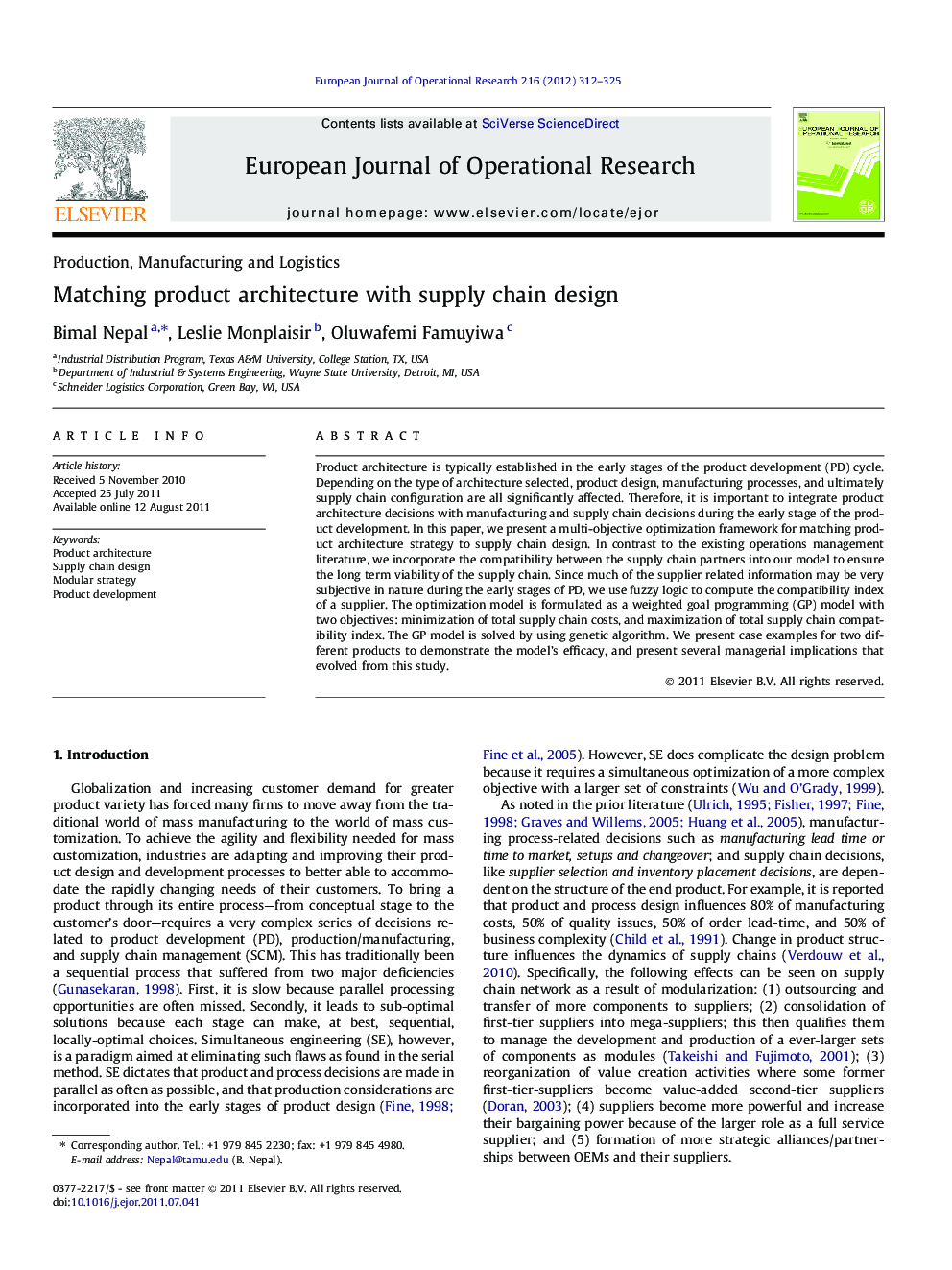| Article ID | Journal | Published Year | Pages | File Type |
|---|---|---|---|---|
| 480170 | European Journal of Operational Research | 2012 | 14 Pages |
Product architecture is typically established in the early stages of the product development (PD) cycle. Depending on the type of architecture selected, product design, manufacturing processes, and ultimately supply chain configuration are all significantly affected. Therefore, it is important to integrate product architecture decisions with manufacturing and supply chain decisions during the early stage of the product development. In this paper, we present a multi-objective optimization framework for matching product architecture strategy to supply chain design. In contrast to the existing operations management literature, we incorporate the compatibility between the supply chain partners into our model to ensure the long term viability of the supply chain. Since much of the supplier related information may be very subjective in nature during the early stages of PD, we use fuzzy logic to compute the compatibility index of a supplier. The optimization model is formulated as a weighted goal programming (GP) model with two objectives: minimization of total supply chain costs, and maximization of total supply chain compatibility index. The GP model is solved by using genetic algorithm. We present case examples for two different products to demonstrate the model’s efficacy, and present several managerial implications that evolved from this study.
► Impact of product architectural strategy on the supply chain design is analyzed. ► Two case studies are presented from heavy equipment and automobile industries. ► Modular architectural design was found to have lower total supply chain costs. ► The modular design required more compatible suppliers than the integral design.
